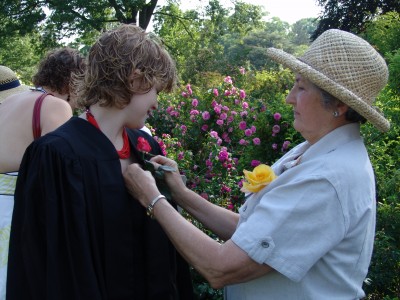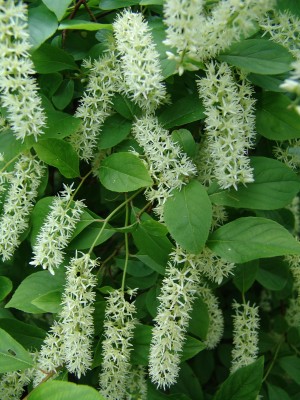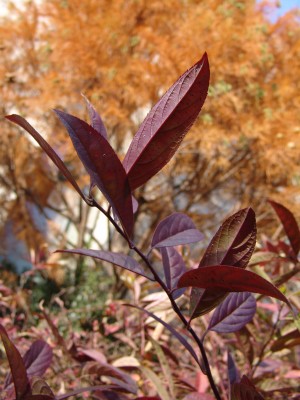This weekend the Arboretum is preparing to participate in one of our favorite traditions with the graduates of Swarthmore College. Prior to marching into the Scott Outdoor Amphitheater and receiving their well-earned diplomas, graduates can meet staff and volunteers from 8:15 to 9:30 am to have a fresh cut rose from the Dean Bond Rose Garden pinned on their gown.
After the ceremony and in addition to receiving roses, graduates are given an Itea virginica ‘Henry’s Garnet’, Virginia sweetspire, as a living memento of their years spent among the gardens of the campus-arboretum. ‘Henry’s Garnet’ was named and introduced by the Scott staff in 1984. It has exceptional fall color lasting from October into December reflecting the Swarthmore College school color of garnet.
It also has long sprays of creamy white, fragrant flowers in the summer, hence the common name of sweetspire. This shrub received the Gold Medal Award from the Pennsylvania Horticultural Society in 1988 for its outstanding qualities.
An adaptable native shrub, sweetspire will grow in full sun or partial shade, although the fall color and flowering will be best in sunny locations. It will thrive in wet sites, but also performs well in fairly dry ones. It is free of serious pests and diseases. At maturity, this shrub will reach 4-6 feet, forming a mound of arching stems.
Because Itea has a growth habit of sending out new shoots throughout its life, graduates can plant this shrub in a family or friend’s garden now (if they don’t have their own garden yet) and in a few years the graduates can transplant it, leaving a piece behind. Itea is hardy in zones 5-9, meaning it will grow from Southern Maine south to Florida and across the Midwest (through the middle of Illinois, Missouri and Ohio) to and through the West Coast states.
We invite you to look at Virginia sweetspire growing in the Teaching Garden behind the Scott office building and in the Rose Garden Circle between McCabe Library and Parrish Hall. This plant will make a great addition to any young or mature garden. We hope this plant will be part of the graduate’s garden and will bring back fond memories of the Scott Arboretum.
We wish all of the 2008 graduates a bright and green future.



